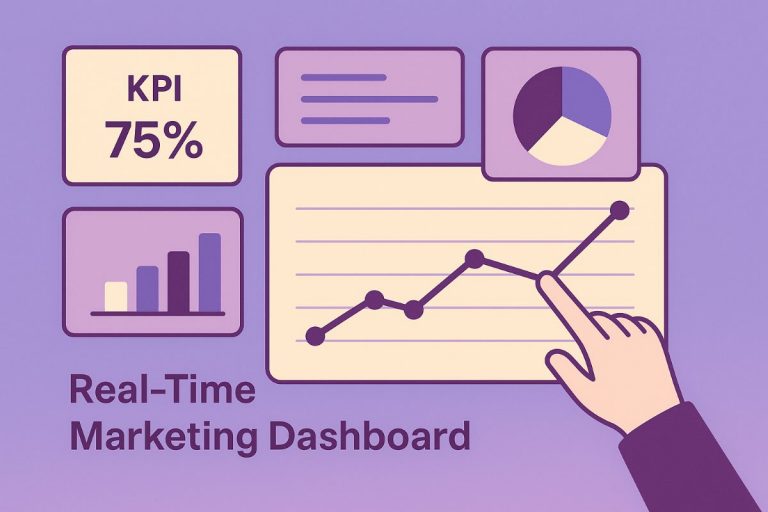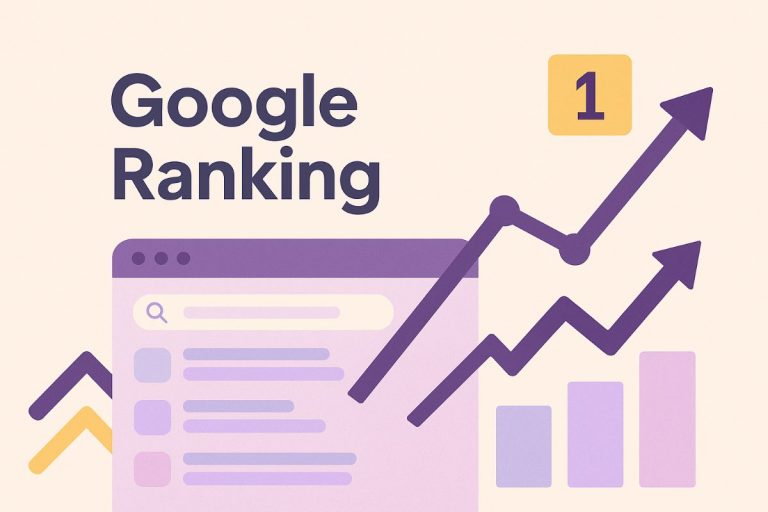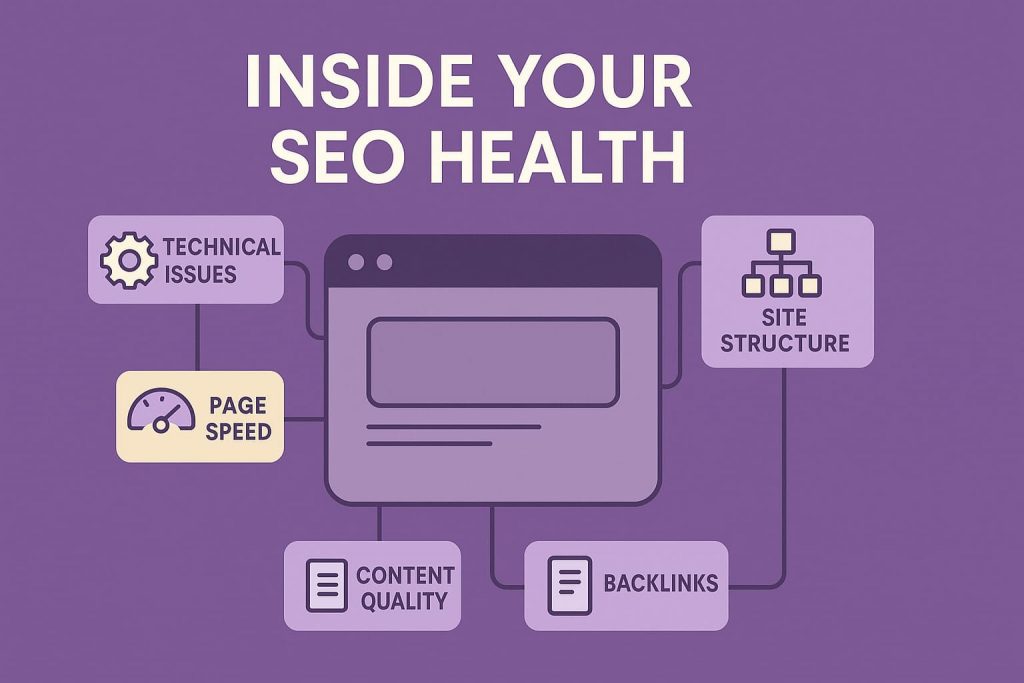
- How to Conduct an SEO Audit That Actually Drives Results: A Proven Process
- What Is an SEO Audit (And Why Your Website Needs One)
- Benefits of Conducting an SEO Audit
- Types of SEO Audits: Understanding the Different Approaches
- Essential Tools for a Comprehensive SEO Audit
- A Step-by-Step SEO Audit Process
- Setting Realistic Timeframes for Your SEO Audit
- Creating an SEO Audit Report That Drives Action
- Partner with Enterprise-Level SEO Experts for Comprehensive Audits
- Prioritizing and Implementing SEO Audit Findings
- Common SEO Audit Mistakes to Avoid
- Common SEO Problems Uncovered in Audits (And How to Fix Them)
- How Often Should You Conduct an SEO Audit?
- Conclusion: Turning Your SEO Audit Into a Growth Strategy
- FAQ
A comprehensive SEO audit is the foundation of every successful digital strategy. It helps uncover performance gaps, technical issues, and growth opportunities that directly influence visibility and conversions. This guide explains how to conduct a professional, data-driven audit to enhance rankings, traffic, and long-term business performance.
How to Conduct an SEO Audit That Actually Drives Results: A Proven Process
Conducting an SEO audit is more than checking boxes — it’s about uncovering what truly drives performance. Across hundreds of enterprise-level projects, systematic SEO audits have helped improve organic traffic by up to 65% and significantly boost search engine rankings. This proven process ensures that every audit delivers measurable, data-backed outcomes instead of vague technical insights.
By following a structured SEO methodology focused on website performance and ROI, businesses can transform audits into actionable growth strategies. The goal is not just to identify issues but to prioritize actions that deliver lasting SEO results and sustainable improvements in visibility.
Key Takeaways:
- Learn a step-by-step methodology for conducting a full-scale SEO audit that drives measurable results.
- Discover how to analyze website performance to improve rankings and organic traffic.
- Understand how to prioritize findings for maximum ROI impact.
- See how data-driven SEO practices turn audits into long-term growth tools.
What Is an SEO Audit (And Why Your Website Needs One)
An SEO audit is a comprehensive website health check that evaluates how effectively your site performs in search engines. It identifies technical issues, content gaps, and optimization opportunities that affect search engine rankings and organic traffic. For enterprise websites, an audit provides a clear roadmap to improve visibility, efficiency, and scalability across all digital channels.
In one recent project, implementing audit recommendations led to a 45% increase in organic traffic within three months. A professional SEO audit should be seen as a growth accelerator aligned with the “Traffic + Conversion = Sales” model, not just a technical checklist.
Benefits of Conducting an SEO Audit
A professional SEO audit delivers measurable improvements in performance, visibility, and revenue. By revealing how users and search engines interact with your website, audits help businesses make informed decisions that enhance user experience and strengthen search visibility. The results extend beyond rankings — they directly impact engagement and conversions.
For example, an enterprise e-commerce site identified multiple indexing and content duplication issues during a comprehensive audit. After implementing the recommended fixes, the site achieved a 65% increase in organic traffic within just three months, along with higher conversion rates and stronger competitive positioning.
Key Benefits of Regular SEO Audits:
- Enhanced user experience. Streamlined navigation and faster loading improve engagement.
- Increased organic traffic. Optimized content and structure drive higher visibility in SERPs.
- Better conversion rates. Data-led recommendations align user intent with clear conversion paths.
- Competitive advantage. Continuous audits reveal opportunities competitors miss.
- Improved search visibility. Consistent optimization strengthens authority across target keywords.
- Long-term ROI. Systematic monitoring ensures sustainable growth and measurable results.
Types of SEO Audits: Understanding the Different Approaches
Different websites require different SEO audit approaches, depending on their structure, goals, and scale. Enterprise clients often need customized solutions that address specific performance bottlenecks or growth opportunities. For example, a technical SEO audit was conducted for a large e-commerce platform struggling with crawl and indexation issues, while a content-heavy publisher benefited more from a comprehensive audit focused on keyword performance and content alignment.
In professional practice, audits are typically segmented into distinct categories that together form a full-spectrum SEO evaluation. Each type targets a critical performance area — from the technical foundation to on-page optimization and external authority signals. This segmentation allows businesses to allocate resources efficiently and focus on the factors that most affect visibility and conversions.
Main Types of SEO Audits and Their Core Focus:
- Technical SEO Audit. Identifies crawl errors, indexation issues, and site speed problems that impact visibility.
- On-Page SEO Audit. Reviews titles, meta descriptions, internal linking, and keyword alignment for content optimization.
- Content Gap Analysis. Detects missing or underperforming topics to strengthen topical authority and relevance.
- Backlink Profile Analysis. Evaluates link quality, anchor distribution, and potential toxic links.
- Local SEO Audit. Focuses on Google My Business optimization, NAP consistency, and local ranking signals for businesses targeting regional visibility.
Essential Tools for a Comprehensive SEO Audit
A successful SEO audit relies on accurate data, which is why using the right SEO audit tools is essential. Enterprise-level audits typically combine multiple solutions to cover every technical and analytical aspect — from site speed performance to crawl error analysis. After testing dozens of platforms, this curated toolkit provides the most efficient and reliable insights across different audit phases.
For instance, during a large-scale Google Search Console audit, an indexing anomaly was detected that other crawlers missed. Identifying and fixing this issue helped recover nearly 20% of lost visibility within two weeks. Such results highlight why tool selection must be data-driven and adapted to the complexity of each project.
Below is a comparison of industry-standard tools used by SEO professionals for full-spectrum website evaluations:
| Tool Name | Primary Function | Price Point | Professional Rating / Comment |
|---|---|---|---|
| Google Analytics | Tracks user behavior and conversion metrics | Free | Essential for understanding engagement and ROI |
| Google Search Console | Monitors indexing, crawl errors, and performance data | Free | Core tool for technical and content diagnostics |
| Google PageSpeed Insights | Evaluates page load time and Core Web Vitals | Free | Crucial for optimizing site speed and usability |
| Screaming Frog | Conducts comprehensive site crawls and error reports | Paid | Industry standard for deep technical SEO audits |
| SEMrush | Analyzes keywords, backlinks, and competitive insights | Paid | All-in-one suite ideal for strategy planning |
| Ahrefs | Performs backlink audits and keyword tracking | Paid | Best for link quality evaluation and content gap analysis |
A Step-by-Step SEO Audit Process
Over years of enterprise-level experience, SEO professionals have refined a three-phase audit process that provides a structured, repeatable, and data-driven framework for achieving measurable results. This process ensures that every aspect of website performance is analyzed and optimized systematically — from technical foundations to strategic execution.
Three Phases of the SEO Audit Workflow:
- Audit & Data Collection. The foundation stage, focused on gathering all relevant performance data through a full website analysis. This includes technical reviews, content evaluations, backlink assessments, and crawl diagnostics.
- Strategic Planning. The insights from the audit are translated into an actionable SEO audit checklist, prioritizing tasks based on potential impact, resource requirements, and business objectives.
- Execution & Refinement. Implementation begins, followed by continuous monitoring, testing, and optimization to ensure lasting performance gains and adaptability to algorithm updates.
This systematic approach guarantees that no critical detail is missed and aligns with a growth-oriented model — Audit → Strategic Planning → Execution & Refinement → Scaling Growth. Applicable to organizations of any size, it consistently delivers scalable, measurable improvements in search visibility and ROI.
Setting Realistic Timeframes for Your SEO Audit
The SEO audit duration varies depending on the audit scope, website size, and technical complexity. A focused technical audit for a small website can typically be completed in 1–2 days, while a full-scale audit for a large e-commerce platform may take 2–3 weeks. Time allocation should always consider the depth of analysis required across technical, on-page, and off-page factors to ensure meaningful insights.
Efficient audit planning and time management are crucial for achieving accurate results without unnecessary delays. Using automated reporting tools, predefined checklists, and scheduled reviews helps streamline the process. While audits identify issues quickly, most organizations begin to see tangible results from implemented recommendations within 3–6 months, once improvements are indexed and performance stabilizes.
Phase 1 – Technical SEO Audit Essentials
A technical SEO audit forms the foundation of every website optimization effort. It evaluates the site’s crawlability, indexation, and overall performance to ensure that search engines can effectively access and understand its content.
Key Technical Elements to Check:
- Crawl error analysis and indexation status check.
- robots.txt analysis and XML sitemap review.
- HTTPS and canonical tag configuration.
- Core Web Vitals and site speed performance review via Google PageSpeed Insights.
- Mobile usability audit using Google Mobile-Friendly Test.
Step-by-Step Process for Analyzing Crawl Data:
- Set up Screaming Frog. Configure user-agent as Googlebot and crawl depth to unlimited for a complete scan.
- Identify crawl errors. Review response codes, redirect chains, and broken URLs.
- Check indexation. Compare crawled pages against indexed URLs in Google Search Console.
- Evaluate internal linking. Identify orphaned pages and weak link structures.
- Validate performance metrics. Review Core Web Vitals to detect slow-loading or unstable pages.
In one enterprise case, a canonical tag conflict caused indexing loss for hundreds of pages. Once corrected, the site recovered 30% of its indexed pages, improving overall visibility. Technical SEO is not just about fixing errors — it’s about engineering a site structure that enhances long-term crawl efficiency and discoverability.
Phase 2 – On-Page SEO Analysis
The on-page optimization review focuses on content quality, keyword targeting, and page structure. This phase ensures that every page supports both user intent and search engine relevance.
Key On-Page Elements to Analyze:
- Title tags, meta descriptions, and header hierarchy.
- Keyword performance audit and density balance.
- Structured data audit and schema validation.
- Internal linking analysis and anchor optimization.
- Duplicate content check and canonical review.
Steps for Evaluating Content Quality:
- Collect data. Export on-page metrics using tools like Ahrefs or SEMrush.
- Assess keyword mapping. Ensure each page targets a unique primary keyword.
- Score content depth: Compare word count and topical coverage with top-ranking competitors.
- Detect thin or outdated content. Mark for consolidation or rewriting.
- Apply CRO insights. Optimize CTAs, readability, and layout for improved conversions.
In a SaaS client project, consolidating thin and overlapping content improved topical authority by 45% and significantly boosted engagement. Integrating on-page SEO with conversion optimization transforms pages from informational assets into measurable growth drivers.
Phase 3 – Off-Page SEO Assessment
An off-page SEO audit examines external factors that influence authority and trust. This includes backlink quality, social signals, and brand mentions across the web.
Key Off-Page Factors to Analyze:
- Backlink profile analysis and domain authority assessment.
- Toxic link detection and disavow recommendations.
- Competitor SEO analysis and link gap discovery.
- Brand mentions and citation consistency.
- Social media engagement and referral signals.
In one audit, identifying and disavowing toxic backlinks helped a client recover from a Google penalty and regain lost traffic within two months. Proper off-page evaluation not only prevents penalties but also supports scalable link-building and reputation management strategies.
Comparison of Good vs. Problematic Backlink Characteristics:
| Characteristic | Good Backlink | Problematic Backlink |
|---|---|---|
| Source Domain | High-authority, relevant website | Low-quality or spam domain |
| Anchor Text | Natural, context-based | Over-optimized or irrelevant |
| Traffic Quality | Real, organic users | Artificial or bot-generated |
| Placement | Editorial or in-content | Footer, sidebar, or hidden |
| Link Pattern | Diverse and natural | Sudden spikes or repetitive links |
Creating an SEO Audit Report That Drives Action
A professional SEO audit report should transform complex data into clear, actionable insights. Its primary goal is not just to showcase technical findings but to provide a roadmap for improvement that business and marketing teams can easily follow. Each report should begin with an executive summary that highlights key discoveries, performance gaps, and the expected business impact of recommended actions.
Effective reports prioritize clarity and structure. For non-technical stakeholders, present technical issues in simple terms — for instance, instead of “canonical tag misconfiguration,” explain that “multiple URLs confuse Google about which page to rank.” Every issue should include a corresponding SEO recommendation, expected outcome, and suggested implementation plan with realistic timelines.
Transparent reporting also means connecting technical improvements to measurable business outcomes. Use visual metrics, like traffic growth, conversion rate improvements, or reduced page load time, to demonstrate value. This approach helps leadership teams make informed decisions and ensures consistent follow-through on prioritized actions.
Sample Prioritization Matrix (Impact vs. Effort):
| Task | Impact | Effort | Priority | Notes |
|---|---|---|---|---|
| Fix broken internal links | High | Low | High | Quick technical improvement for better crawlability |
| Optimize meta titles and descriptions | Medium | Low | High | Enhances CTR and search visibility |
| Implement Core Web Vitals fixes | High | Medium | Medium | Improves UX and site performance |
| Update outdated blog content | Medium | Medium | Medium | Strengthens topical relevance |
| Conduct backlink cleanup | High | High | Low | Important but resource-intensive task |
Partner with Enterprise-Level SEO Experts for Comprehensive Audits
For organizations seeking measurable growth and sustainable visibility, partnering with an experienced enterprise SEO agency is the most effective path forward. LeadCraft is a trusted digital marketing agency specializing in professional SEO audits that combine deep technical analysis with strategic business insights. With over 10 years of experience, 120+ completed enterprise projects, and a proven record of generating 50,000+ qualified leads monthly, the agency delivers results grounded in precision and accountability.
LeadCraft’s data-driven SEO approach goes beyond identifying problems — it builds scalable strategies that transform search engines into long-term growth channels. Every audit uncovers opportunities to improve performance, strengthen authority, and accelerate conversions through tailored implementation plans. Businesses ready to uncover what’s holding their website back can request a free consultation to start their comprehensive SEO assessment with LeadCraft’s enterprise experts.
Prioritizing and Implementing SEO Audit Findings
Successful SEO implementation depends on how effectively audit findings are organized and prioritized. The key is to focus first on quick wins — optimizations that require minimal effort but deliver measurable impact. Categorizing issues by their business value and implementation difficulty helps allocate resources efficiently and maintain steady progress.
In one project, a client with limited development capacity achieved a 28% increase in organic traffic within two months by prioritizing high-impact, low-effort technical fixes and content optimization tasks. This structured approach ensured continuous improvement without overwhelming internal teams.
An impact assessment framework allows teams to focus on what truly drives ROI — improved rankings, conversions, and engagement. Rather than chasing vanity metrics, a data-led prioritization model ensures every SEO action contributes to meaningful, measurable growth.
Common SEO Audit Mistakes to Avoid
Even experienced teams can make critical SEO audit mistakes that limit results and waste valuable resources. The most common issues stem from incomplete audits, misinterpreted data, or an overreliance on automated tools. When LeadCraft reviewed an audit performed by another agency, the team discovered major indexing errors and missed link opportunities — problems that, once fixed, significantly improved visibility and traffic.
Avoiding such missed opportunities requires a systematic, data-driven approach and a willingness to customize audit processes based on each website’s unique structure and goals. Cookie-cutter templates rarely deliver comprehensive results.
Frequent SEO Audit Mistakes and How to Prevent Them:
- Incomplete audits. Always cover technical, on-page, and off-page areas for full insight.
- Ignoring data trends. Review historical analytics to identify performance shifts over time.
- SEO tunnel vision. Balance keyword focus with user experience and conversion metrics.
- Missed implementation follow-up. Create clear action plans and assign responsibilities post-audit.
- Overreliance on tools. Combine automated scans with expert manual reviews for accuracy.
Common SEO Problems Uncovered in Audits (And How to Fix Them)
Comprehensive audits often reveal recurring SEO issues that quietly erode website performance. These problems are common across industries and can significantly affect rankings, crawl efficiency, and user engagement if left unresolved. Identifying and correcting them early ensures stronger technical foundations and sustainable growth.
In one large-scale audit, addressing redirect chains and duplicate content errors improved crawl efficiency by 35%, while resolving keyword cannibalization helped stabilize rankings for multiple product pages. Each issue requires a precise diagnostic approach and targeted fixes based on verified performance data.
The following list outlines the most frequent SEO problems detected during professional audits, along with their typical symptoms and solutions:
- Duplicate content check. Repetitive pages dilute authority; resolve by consolidating or applying canonical tags.
- Keyword cannibalization. Multiple pages compete for the same keyword; merge or redefine content focus to strengthen rankings.
- Crawl budget inefficiency. Over-indexing of low-value URLs wastes crawl resources; use robots.txt and noindex tags to guide Google.
- Redirect chains. Multiple redirects slow loading and weaken link equity; replace long chains with direct 301 redirects.
- Thin content. Pages with minimal or low-quality text reduce relevance; expand with original, topic-rich content.
- Keyword stuffing. Over-optimization lowers readability and credibility; balance keyword density naturally.
- Mobile usability audit. Issues with responsiveness or speed harm rankings; validate fixes using Google’s Mobile-Friendly Test.
By systematically addressing these core issues, websites often see noticeable improvements in indexing, user experience, and organic visibility within weeks.
How Often Should You Conduct an SEO Audit?
The ideal SEO audit frequency depends on your website type, industry competition, and available resources. For most businesses, a full website health check should be performed at least twice a year to ensure optimal performance and alignment with ongoing Google algorithm updates. However, industries with frequent content changes or strong competition — such as e-commerce or digital publishing — often benefit from quarterly reviews to maintain their advantage.
Unscheduled audits should also be initiated after major site migrations, redesigns, or noticeable traffic drops. Regular SEO checkups serve as proactive ranking factor analysis and competitive monitoring measures, ensuring continuous improvement and preventing performance decline. SEO should be viewed as a long-term growth process, not a one-time task.
Recommended SEO Audit Frequency by Business Type:
| Business Type | Recommended Audit Frequency | Scope of Audit |
|---|---|---|
| E-commerce Website | Every 3–4 months | Full technical, on-page, and conversion-focused audit |
| Local Business | Twice per year | Local SEO, Google Business Profile, and NAP consistency |
| Content Publisher / Blog | Every 3 months | Content gap, keyword performance, and site structure review |
| Corporate / B2B Site | Every 6 months | Technical SEO and lead-generation performance audit |
| Startup / New Website | Monthly for the first 6 months | Crawlability, indexing, and content optimization checks |
Conclusion: Turning Your SEO Audit Into a Growth Strategy
A well-executed SEO audit is not just about identifying errors — it’s about uncovering growth opportunities that drive measurable results. When integrated into a broader SEO strategy, regular auditing ensures continuous improvement, strengthens a site’s competitive advantage, and supports long-term organic growth. Each audit provides valuable data to refine performance, enhance user experience, and maximize SEO ROI over time.
By adopting a structured, data-driven approach to auditing, businesses can transform technical maintenance into a sustainable growth engine. Aligned with the “Traffic + Conversion = Sales” model, ongoing audits keep websites healthy, adaptive, and primed for search visibility.
Main Benefits of Regular SEO Audits:
- Continuous website performance improvement through data-backed insights.
- Sustainable organic growth and stronger search presence.
- Clear prioritization of high-impact actions for measurable ROI.
- Long-term competitive advantage through systematic optimization.
FAQ
What is an SEO audit?
An SEO audit is a detailed analysis of a website’s technical setup, content, and backlinks to identify factors affecting search performance and visibility.
How do you perform an SEO audit?
An audit is performed by analyzing technical health, on-page optimization, and off-page authority using specialized tools and a structured review process.
Which tool is best for SEO audit?
Top tools include Google Search Console, Screaming Frog, SEMrush, and Ahrefs, each offering unique insights into performance, crawlability, and backlinks.
How often should you perform an SEO audit?
Most websites benefit from a full audit every six months, or quarterly for fast-changing industries like e-commerce.
What is an SEO audit checklist?
It’s a structured guide covering all audit areas — technical, content, and off-page — to ensure a complete evaluation.














 579
579  8 min
8 min




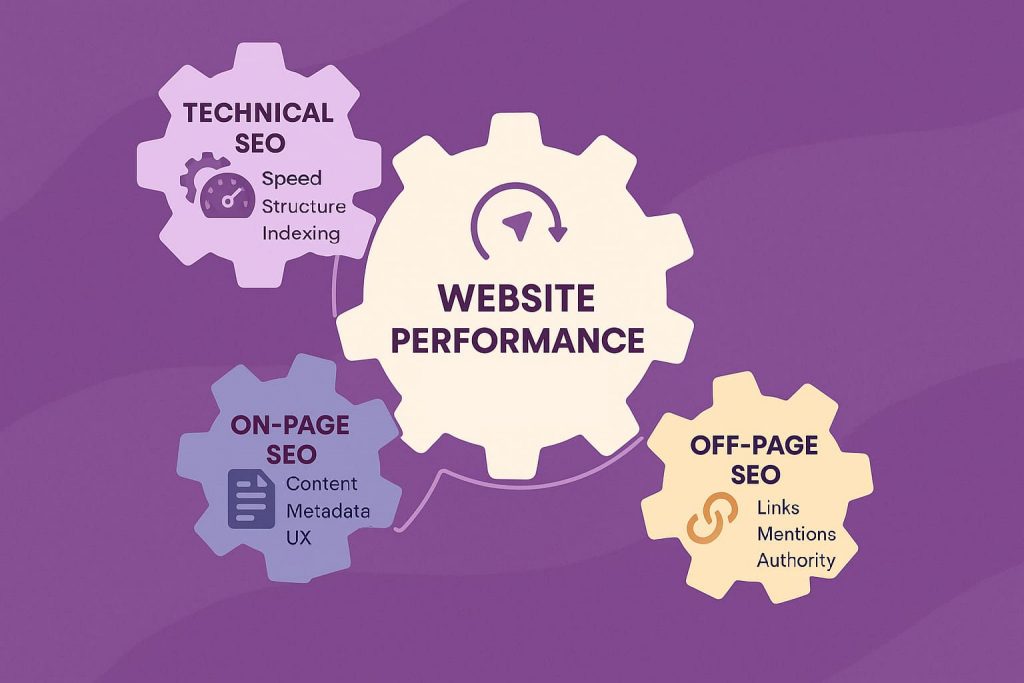
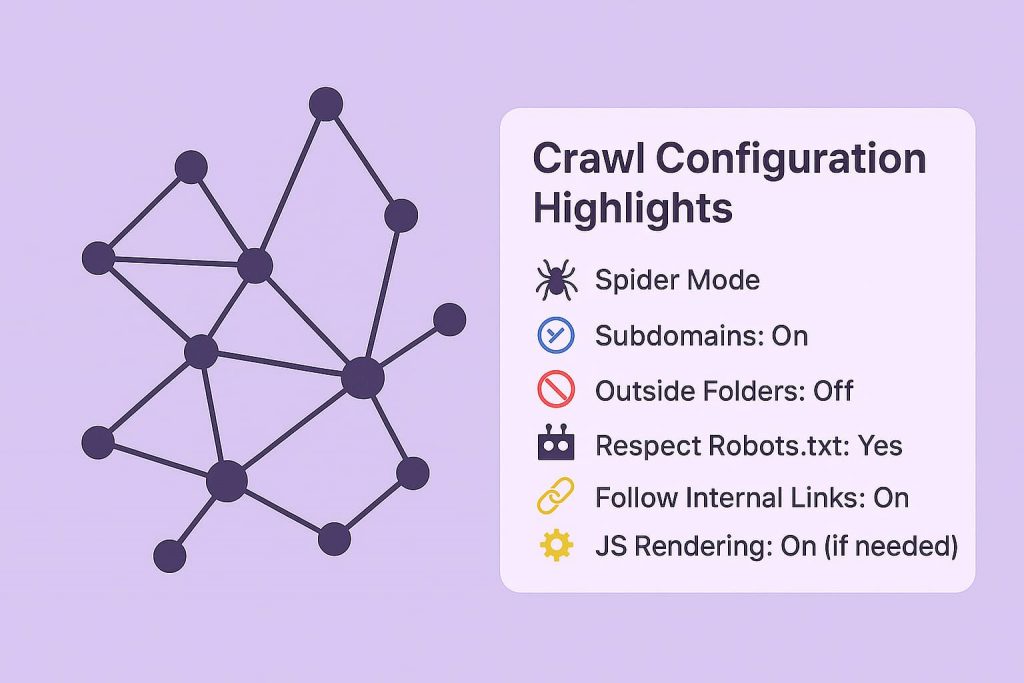
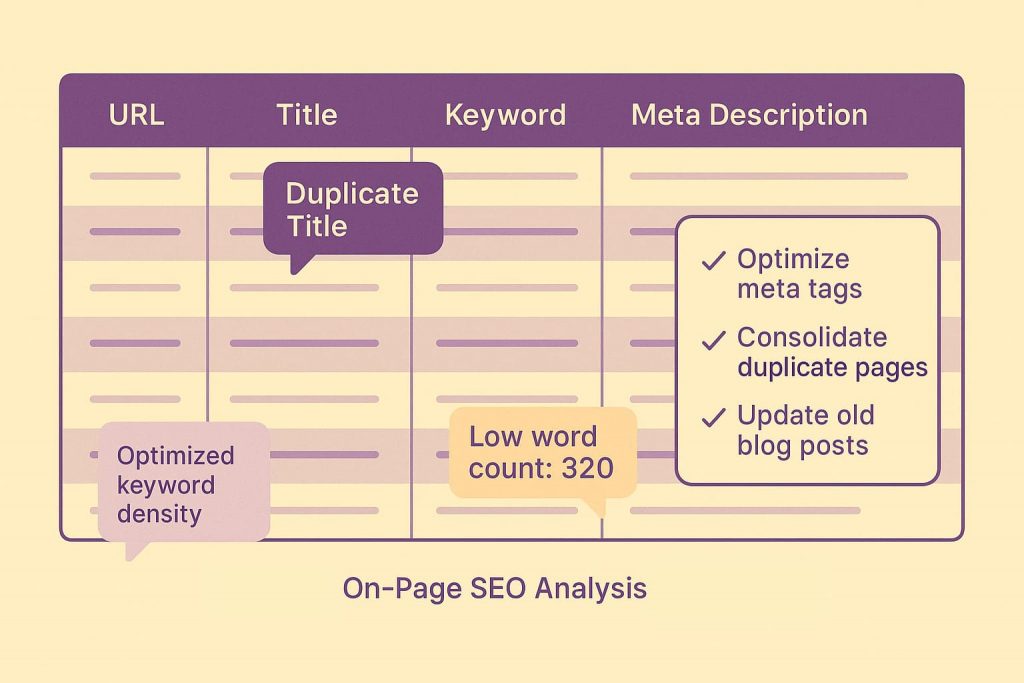
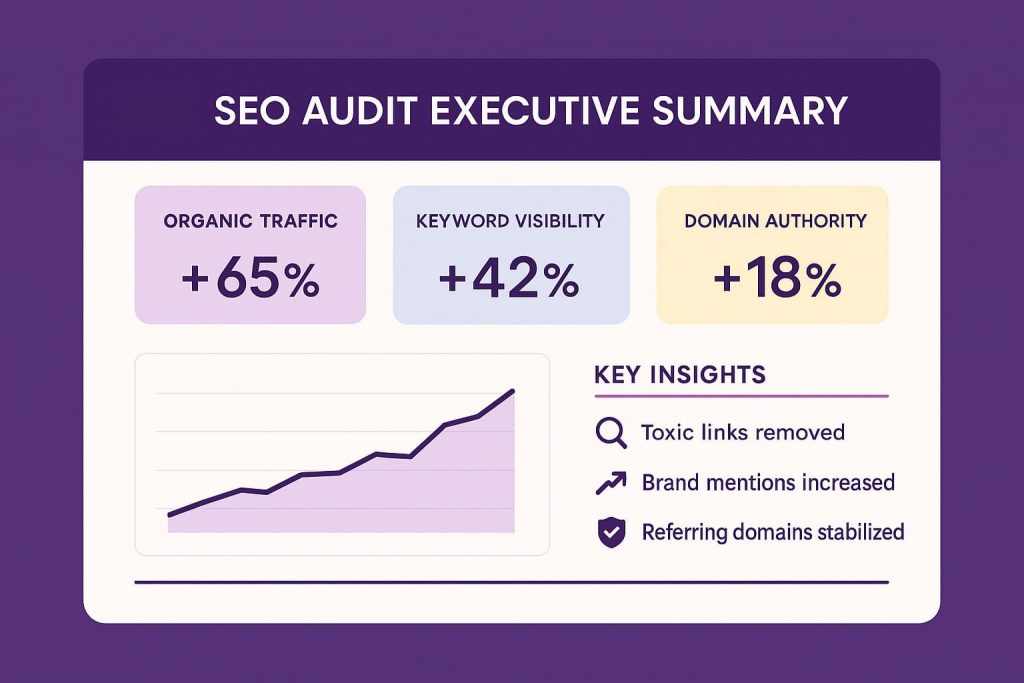
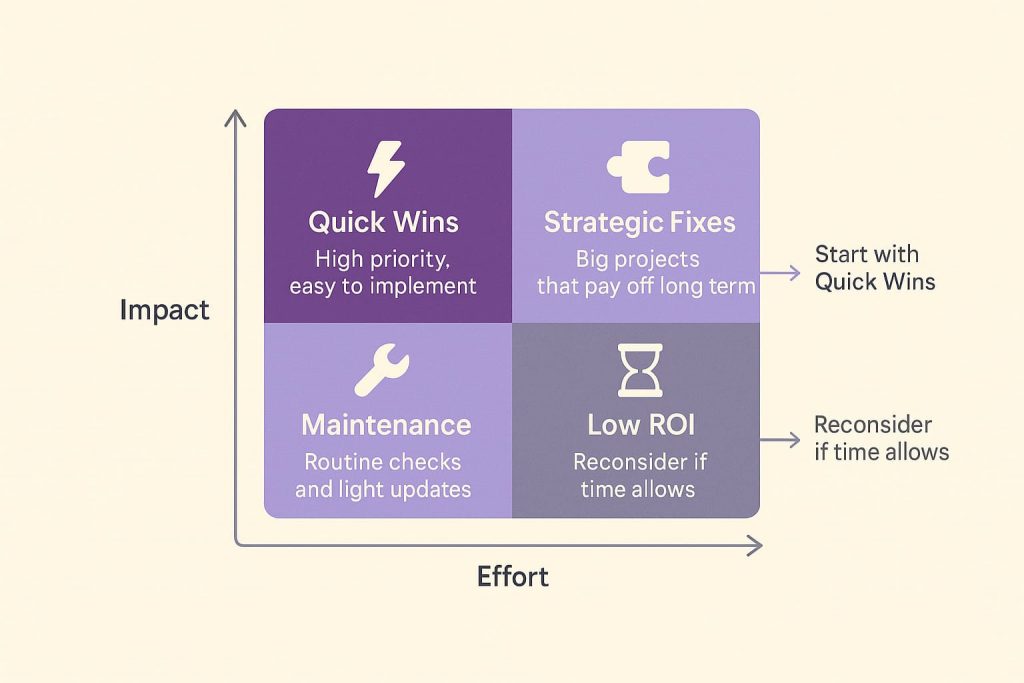
 Share
Share
 X
X
 LinkedIn
LinkedIn




















